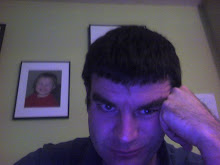Last night and this morning on the way to the house I passed a crowd of people gathered around a table with a man holding an account book. There was music playing, except when a man with a microphone announced people´s names. The crowd was mostly adults, especially older people, and they were solemn in spite of the music.
I tried unsuccessfully to figure out what this was. Some kind of payday for something? Or a kind of off-track betting? Those were my two best guesses, but they couldn´t have been more wrong.
This morning I asked Luciano who works at at La Fonda de INHAT (INHAT´s restaurant) what was going on. Luciano speaks English pretty well, and explained to me it was a funeral.
What happens is this: when a person dies, everyone gets together and puts in some money into a fund. The man with the account book keeps track of what you put in.
Then, when you or someone in your family dies, your family gets a payout from the fund, presumably based on how much you have put in. Also, people make you food and give other gifts.
What this is is precisely a life insurance system organized entirely at the village level.
But what I can´t help but thinking is how valuable those account books are. Of course, they have the technology here to put everything into Excel, and maybe they have. But I bet it would be a serious data entry job to fill in all the contributions back to when the books begin, maybe more than anyone would take the time to type in. The records must go back at least 3 generations, perhaps 50-75 years, and maybe much, much more. And even if the data is in digital form somewhere, the books are almost certainly still the primary source.
What is in those books, really, is so much more than financial data. It´s a record of the generations of San Mateo for every family for as far as they go back. Presumably the better off a person is doing the more they will put in. Which means that the books would be a record of the rise and fall of every family in the village, which is the heart of the Chuj Mayans.
So in the red-lined pages of a leather-bound account book is a story of a people. How beautiful is that?
Subscribe to:
Post Comments (Atom)




No comments:
Post a Comment